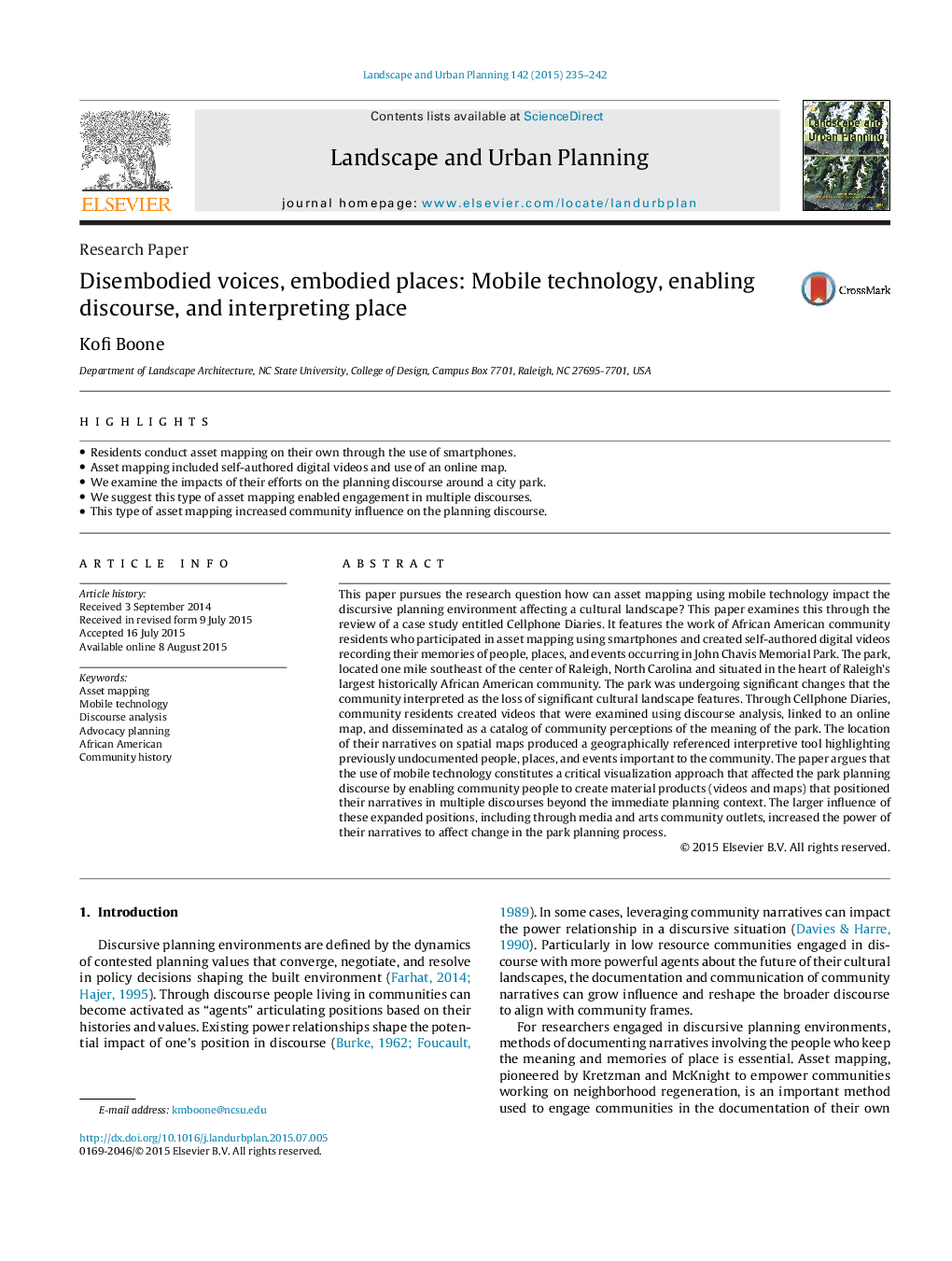| Article ID | Journal | Published Year | Pages | File Type |
|---|---|---|---|---|
| 7461136 | Landscape and Urban Planning | 2015 | 8 Pages |
Abstract
This paper pursues the research question how can asset mapping using mobile technology impact the discursive planning environment affecting a cultural landscape? This paper examines this through the review of a case study entitled Cellphone Diaries. It features the work of African American community residents who participated in asset mapping using smartphones and created self-authored digital videos recording their memories of people, places, and events occurring in John Chavis Memorial Park. The park, located one mile southeast of the center of Raleigh, North Carolina and situated in the heart of Raleigh's largest historically African American community. The park was undergoing significant changes that the community interpreted as the loss of significant cultural landscape features. Through Cellphone Diaries, community residents created videos that were examined using discourse analysis, linked to an online map, and disseminated as a catalog of community perceptions of the meaning of the park. The location of their narratives on spatial maps produced a geographically referenced interpretive tool highlighting previously undocumented people, places, and events important to the community. The paper argues that the use of mobile technology constitutes a critical visualization approach that affected the park planning discourse by enabling community people to create material products (videos and maps) that positioned their narratives in multiple discourses beyond the immediate planning context. The larger influence of these expanded positions, including through media and arts community outlets, increased the power of their narratives to affect change in the park planning process.
Related Topics
Life Sciences
Agricultural and Biological Sciences
Ecology, Evolution, Behavior and Systematics
Authors
Kofi Boone,
